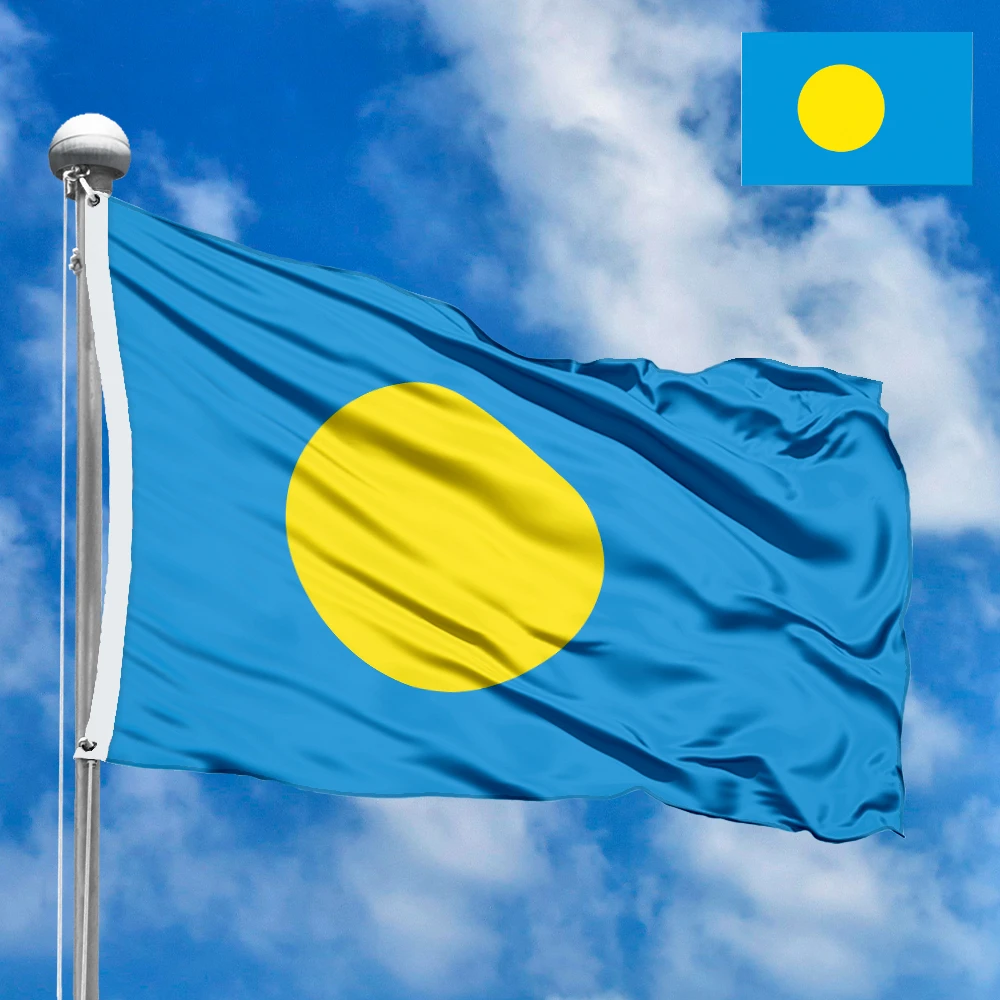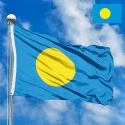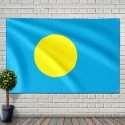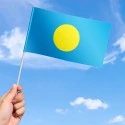The flag of Palau is a remarkable example of a national symbol that is both elegantly simple and profoundly meaningful. Its design, with a single golden-yellow circle on a light blue field, eschews complexity in favor of powerful and deeply resonant symbolism rooted in the nation's culture and its journey to independence. Adopted on January 1, 1981, upon achieving self-government, the flag remains a source of immense national pride.
Design and Symbolism
The flag consists of a simple yet striking design: a light blue field with a large, golden-yellow circle placed slightly to the left of the center.
-
The Light Blue Field: The background color, a serene light blue, represents the vast and encompassing Pacific Ocean. It symbolizes the nation's sovereignty and its status as an island state. This specific shade of blue was chosen to represent the peaceful transition from being a Trust Territory of the Pacific Islands, which was under U.S. administration, to becoming an independent nation. It is a color of peace and tranquility, reflecting the Palauan people's aspirations.
-
The Golden-Yellow Circle: The large yellow circle is the flag's most significant element. It represents the full moon, which holds immense cultural importance in Palauan tradition. The full moon is considered the most favorable time for key activities in the Palauan way of life: planting, fishing, and harvesting. It is also a time for traditional ceremonies, gatherings, and celebrations. The circle's placement, slightly off-center towards the hoist, is not arbitrary; it is deliberately designed to evoke the image of a full moon rising over the horizon, a common and cherished sight in the Pacific.
History and Adoption
The flag's creation came about as Palau prepared to separate from the Trust Territory of the Pacific Islands and become a sovereign state. A nationwide contest was held to design a new flag, and the winning design was chosen from over 1,000 entries. The selected design was submitted by Mr. Blau Skebong, whose simple yet powerful concept resonated with the nation's cultural values and desire for a distinct identity.
The flag was officially adopted on January 1, 1981, the date Palau gained self-governance. It was deliberately chosen to be different from the flag of the Trust Territory, which featured a blue field with six white stars, to symbolize a clean break from colonial administration and the beginning of a new, independent era. The flag was retained when the Compact of Free Association with the United States was signed and came into effect on October 1, 1994, solidifying its place as the enduring national symbol.
Flag Size and Proportions
The official dimensions of the flag of Palau are 5:8 (width to length). The golden-yellow moon is centered vertically but is horizontally offset, with its center located at a distance of 3/7 of the flag's length from the hoist. The diameter of the moon is 3/5 of the flag's width. These specific proportions ensure that the flag’s unique and symbolic design is consistently and accurately represented.
The Country, Region, and Meaning for Residents
The Republic of Palau is an archipelago of more than 500 islands, located in the western Pacific Ocean within the Micronesia region. The country is celebrated for its pristine natural beauty, particularly the famous Rock Islands and its rich marine biodiversity.
For the people of Palau, the flag is a sacred symbol of their independence, their unique culture, and their ancestral traditions. The light blue field is a reminder of their identity as a people of the sea, while the golden moon is a deeply personal symbol that connects them to their heritage and way of life. It is not just a national emblem; it is a visual representation of their collective identity, celebrating their history and guiding their future as a self-determined nation. The flag’s powerful and simple message is a source of immense national and cultural pride.
Interesting Facts
-
The flag's design has often been compared to the flag of Japan, which also features a central circle, but its symbolism is entirely different.
-
The designer, Mr. Blau Skebong, was inspired by the cultural significance of the full moon in Palauan society, a time of prosperity and celebration.
-
The flag is one of the few national flags in the world with a central emblem that is not positioned in the geometric center of the flag. This off-center placement is a deliberate choice, symbolizing the rising moon.
The flag of Palau is a beautiful and meaningful testament to the nation's peaceful emergence into the world, its cultural depth, and its enduring connection to the natural cycles of the Pacific.
In the demonstration images, full-size flags are shown with proportions of 2:3, and hand-held flags with proportions of 1:2.






 Waving flag
Waving flag
 Sizes:
Sizes:
 Round flag
Round flag
 Sizes:
Sizes:
 Rectangular flag 2:3
Rectangular flag 2:3
 Sizes:
Sizes: